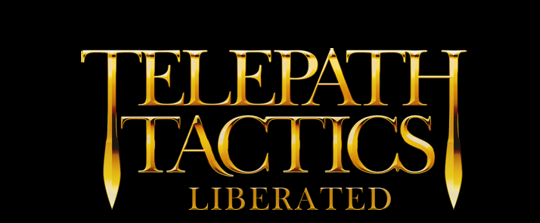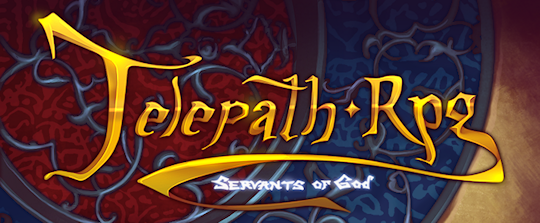Note: what follows is an April Fool’s Day prank post. I’m leaving it here for posterity.
Hey there, folks! In the spirit of the presidential state of the union address, I thought it might be a good idea to have a frank discussion with you all about where Sinister Design stands today, and where I plan to take it in the future.
Let’s start with where it is right now. I’ve long since recouped my costs involved in making Telepath RPG: Servants of God and made some profit off of the game. However, when you consider that the game took more than 4 years to make, the revenue it has brought in compensates me at a level far below my country’s hourly minimum wage. Moreover, sales have already started to slow to a trickle.
I’ve long since resigned myself to the fact that Telepath RPG: Servants of God would not be a commercial success. It starts too slowly to draw in hardcore players; it’s too inaccessible to draw in players new to the genre, despite my best efforts at teaching the game’s systems thoroughly at the outset; the game’s aesthetically inconsistent top-down graphics put many people off; and it all took much too long to make, besides. What I’m saying here, folks, is that I committed one of the cardinal sins of game design: failing to know and design for my audience. As a result, the game I poured so much time and effort into has been–let’s be honest–a commercial failure.
Moving forward, I’m going to have to make some hard decisions about the kind of games I make if I want this business to succeed. I’ve been thinking things over, and I have some bad news: Telepath RPG has to go. I mean the whole series. I’m moving on as of today. It’s like Brad Wardell of Stardock said: when you release a game that does poorly, it’s simply a poor business decision to burden the next game with the baggage of its predecessor.
Where does that leave Sinister Design? In all honesty, I considered doing what Mark Pay did when The Spirit Engine 2 failed to pan out for him: releasing my games for free and disappearing from the scene entirely. Four years and three months is a horrifyingly long time to pour your heart into building something, only to watch it bobble around for a few weeks and then sink straight to the ocean floor.
But I’m not sure that I have it in me to just stop making games altogether. I just have to retool and focus on making things that will actually sell. I’ve been doing some research, and it turns out that strategy games just don’t have the market they once did. Worse, American journalists tend to take a negative attitude toward turn-based games, which are viewed as a sort of historical artifact from an era when computers couldn’t do any better.
It’s clear that I have to find a new niche. But which niche? Most of the indie developers I know have been moving into social games, and with good reason. Look at the absurd revenue Zynga draws in month after month. The company single-handedly accounted for 12% of Facebook’s total revenue last year. That’s a mind-blowing amount of money. Forget the Mega Millions lottery prize–Zynga’s essentially winning it year after year after year, and just from piddly in-game transactions.
It’s clear what I have to do. As of today, I’m giving up on RPGs and moving into social games. I know this will upset a lot of people, but it’s the only way that I can make Sinister Design into a viable business. I would be lying if I said I didn’t have serious reservations about this, but facts are facts. PC gamers simply don’t want tactical RPGs; or if they do, they aren’t willing to pay money for the privilege. They want to click and plant crops and nag their friends and spend real-world money on “energy” to perform “actions.”
People may say otherwise with their words, but it’s how they actually spend their money that talks the loudest. People want mind-annihilating games of rote repetition: Skinner Boxes with high quality graphics. So be it, then. That is what I will give them. Stay tuned for the announcement of my next official game project.






